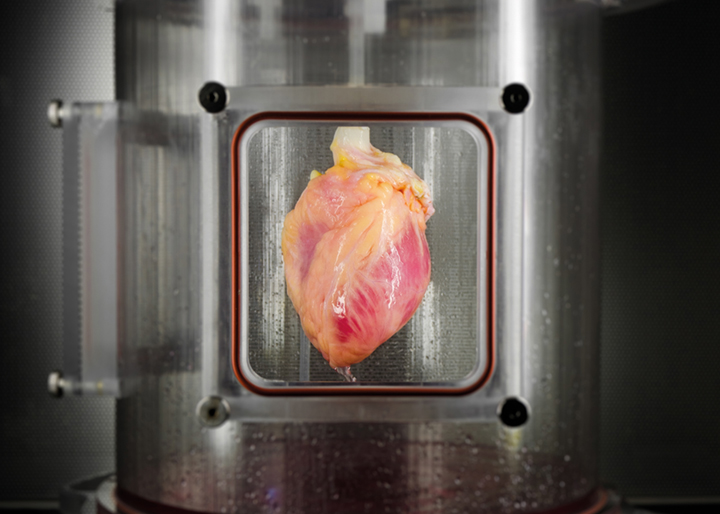Forty-nine years ago Lewis Washkansky received the first heart transplant in Cape Town, South Africa. Since then there have been thousands of transplants done around the world.

However, getting a viable heart is tricky business, and science is trying to increase the odds for those who need a transplant.
The main problem with heart transplants arise from compatibility. A body could reject a whole human heart. But what if you only used part of it for transplantation?
READ MORE: Organ donations and transplants up in Canada, along with need
In a first, scientists from Massachusetts General Hospital’s Center for Regenerative Medicine and Harvard Medical School have created a functional heart through bio-engineering.
In the study, the scientists took 73 human hearts that were unsuitable for transplantation and decellularized them, stripping them of the donors’ cells. This prevents a host from rejecting the heart (since there are no foreign cells). What remains is a matrix, or scaffold.
The researchers then reprogrammed the hosts’ skin cells into induced pluripotent stem cells (iPSCs). These special cells are able to become almost any type of cell. In this case, they were reprogrammed to become heart cells and, bathing them in a nutrient solution, the researchers found that the cells were able to grow on the scaffold.
After two weeks of bathing in this solution, the scientists found that the cells had changed into “immature cardiac tissue.” They stimulated it electrically, and it actually started to beat.
“Regenerating a whole heart is most certainly a long-term goal that is several years away, so we are currently working on engineering a functional myocardial patch that could replace cardiac tissue damaged due a heart attack or heart failure,” said Jacques Guyette, of the Center for Regenerative Medicine and lead author of the report.
Though regenerating a whole heart is a long way off, this could bring new hope to those suffering from cardiac issues. Guyette said that current research is looking to develop patches for people with damaged cardiac tissue.
The study was published in the medical journal Circulation Research.
- Canadian man dies during Texas Ironman event. His widow wants answers as to why
- ‘Super lice’ are becoming more resistant to chemical shampoos. What to use instead
- Canadians more likely to eat food past best-before date. What are the risks?
- Treatment from female doctors leads to lower death rates, study finds




Comments